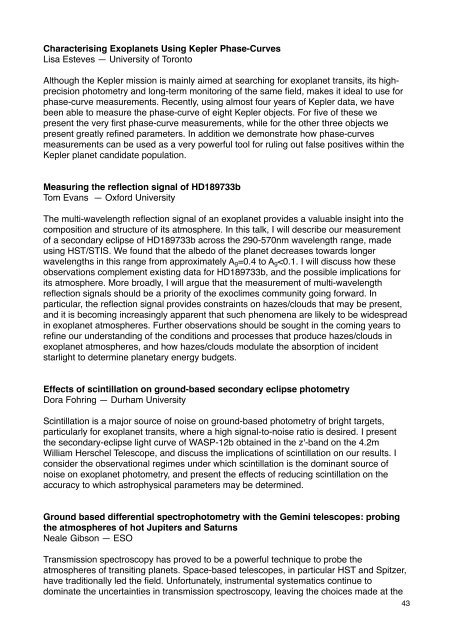Exoclimes_Conference_booklet1
Exoclimes_Conference_booklet1
Exoclimes_Conference_booklet1
Create successful ePaper yourself
Turn your PDF publications into a flip-book with our unique Google optimized e-Paper software.
Characterising Exoplanets Using Kepler Phase-Curves!<br />
Lisa Esteves — University of Toronto!<br />
Although the Kepler mission is mainly aimed at searching for exoplanet transits, its highprecision<br />
photometry and long-term monitoring of the same field, makes it ideal to use for<br />
phase-curve measurements. Recently, using almost four years of Kepler data, we have<br />
been able to measure the phase-curve of eight Kepler objects. For five of these we<br />
present the very first phase-curve measurements, while for the other three objects we<br />
present greatly refined parameters. In addition we demonstrate how phase-curves<br />
measurements can be used as a very powerful tool for ruling out false positives within the<br />
Kepler planet candidate population.<br />
Measuring the reflection signal of HD189733b!<br />
Tom Evans — Oxford University!<br />
The multi-wavelength reflection signal of an exoplanet provides a valuable insight into the<br />
composition and structure of its atmosphere. In this talk, I will describe our measurement<br />
of a secondary eclipse of HD189733b across the 290-570nm wavelength range, made<br />
using HST/STIS. We found that the albedo of the planet decreases towards longer<br />
wavelengths in this range from approximately Ag=0.4 to Ag


